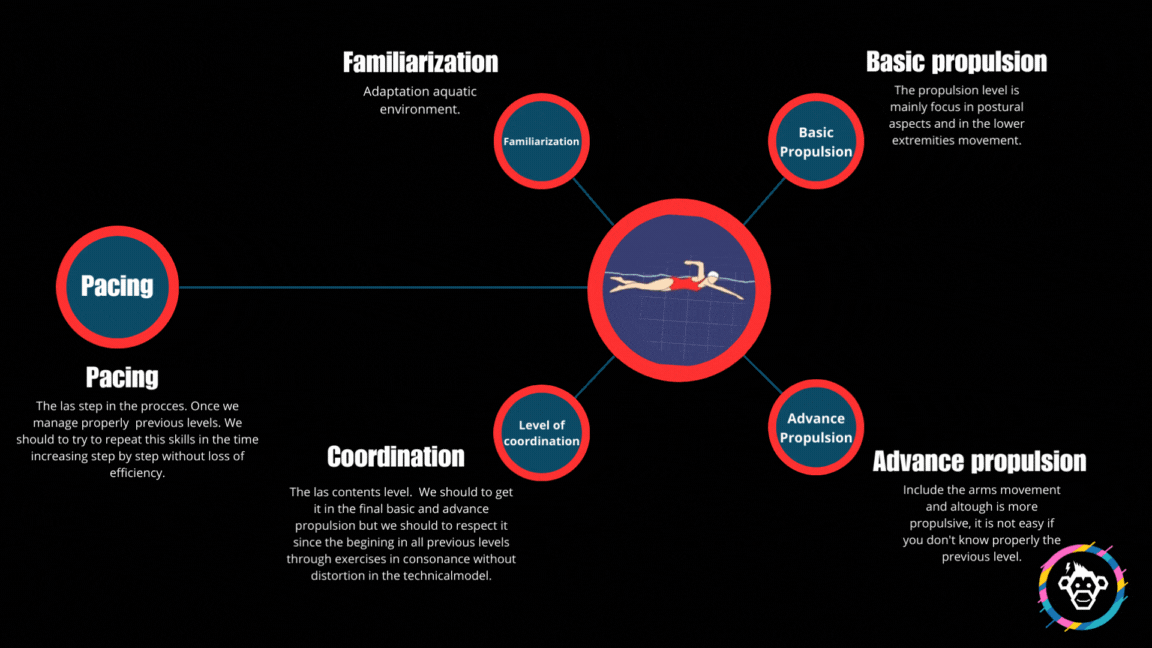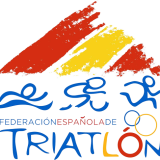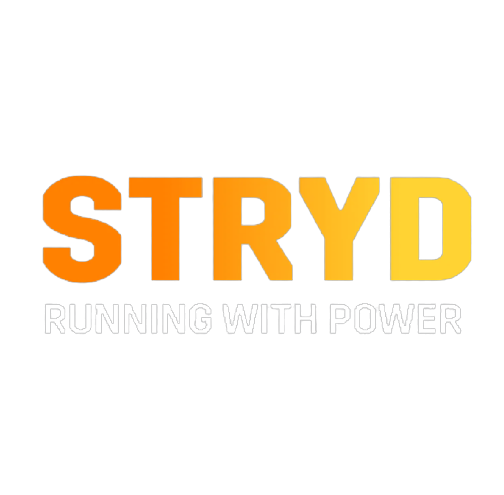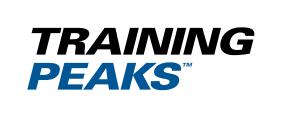Why is it so important to respect the phases of swimming technique during learning?
Every year many people start in the world of trialton and/or swimming, and every year the same mistakes are seen during the learning phases.
As in running and other sports, we must keep in mind that there are individual differences, functional limitations and what may work for one person may not be ideal for another. Some swimmers or triathletes may benefit from professional training or biomechanical analysis to identify and address specific problems in their swimming technique. Additionally, gradual adjustments in technique are recommended to avoid overloading muscles and joints.

What are the learning phases of swimming?
Learning phases
The learning phases of swimming are the steps that we must address at each specific moment during our initiation process to this sport.
Note that to approach the next phase it is necessary to have mastered the previous phase.
Below you can see a picture.

Familiarization
It is the phase prior to basic propulsion. It is the phase where we will become familiar with the aquatic environment, we interact with the environment and learn basic techniques such as flotation, immersion and basic breathing.
It should be noted that this phase is usually addressed at an early age. This means that we often find ourselves with adults who “know” how to swim, but do not have the basic familiarization techniques, giving rise to future problems in the following phases.

Basic level propulsion
The phases of basic propulsion focus fundamentally on postural aspects and the movement of the legs;
;
- Body aligment. Perhaps it is the most important thing in this phase, being the greatest limiting factor increasing braking forces.
- Head position. Look at 45 degrees to the front with the gaze below the water and the surface of the water above the forehead.
- Hip position. Control of the abdominal area to ensure that the hip remains in a horizontal position.
- Efficient kick from the hip with slight bending of the knee.
-
Breathing gesture. Head position at 45 degrees with a quick lateral turn.
Below a short.

Propulsion advance level
This phase would not be easy to tackle without good skills in the basic propulsion phase. In this phase we will address the technical phases of the stroke and its correct execution, as well as postural aspects.
.
- Entry of the hand. The hand enters the water in a position intermediate between the man and the head. The palm is facing down without flexion or extension of the wrist.
- Grip. A moment of vital importance, it is where the best supports on the body of water must be sought for the first time.
- Pull. In this phase it is about taking as much water as possible, leaning on it and moving it backwards, this will be the key moment in our forward progress.
- Push. Start from the maximum depth position. The hand-forearm-arm assembly now moves backwards and outwards, trying to maintain as much as possible the “forward elbow” position.
- Effective breathing. Proper head position. The forward head orientation makes it easier for you to execute the movement necessary to breathe quickly and effectively.
Below a short.

Level coordination
What is it?
It is the phase in which we will put into practice all the coordinated elements at the same time and in an efficient way.
We will have to have excellent postural control and review the efficiency of coordination on our alignment, so that it does not influence it.
In the image you can find a small summary with these characteristics.
.

Pacing
What is it?
Once all the skills are considered acquired, we would begin to work on pacing. Pacing is a control over the swimming rhythm and the strokes, trying to improve efficiency over time without losing control over the strokes and postural control over time.

A small description of how we can work on this phase would be;
- Stability of partials: We would begin to increase the distances a little more each time without losing technique during the swim. Being increasingly more efficient.
- Cycle frequency: Here the key would be control over the frequency of the cycles. That is, while increasing the distance in the previous point, we should now be able to maintain the cycles. At this point we should have absolute control of the cycles, increasing or decreasing depending on each race situation. As an example, a start in a sprint trialton is not the same during the first meters in which the pace will be high, compared to the final meters.
- Efficiency: By improving the two previous points we should become increasingly more efficient.
Technical analysis / biomecanichal
As in other sports, it must be taken into account that there are individual differences, functional limitations and what may work for one person may not be ideal for another. Some swimmers or triathletes may benefit from professional training or biomechanical analysis to identify and address specific problems in their swimming technique. Additionally, gradual adjustments in technique are recommended to avoid overloading the muscles and joints with each stride.
Below you can see a table with the analysis of a triathlete who is starting out, with different deficiencies in the basic phases of learning, so before starting to add meters and focus on “pacing” we should cover these deficiencies to have guarantees in order to be able to add meters of quality, avoiding future injuries.
.

If you have questions don’t hesitate to write me!
GO!
All rights reserved | Legal Notice | Privacy Policy| Cookies







